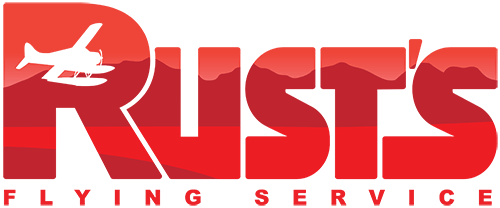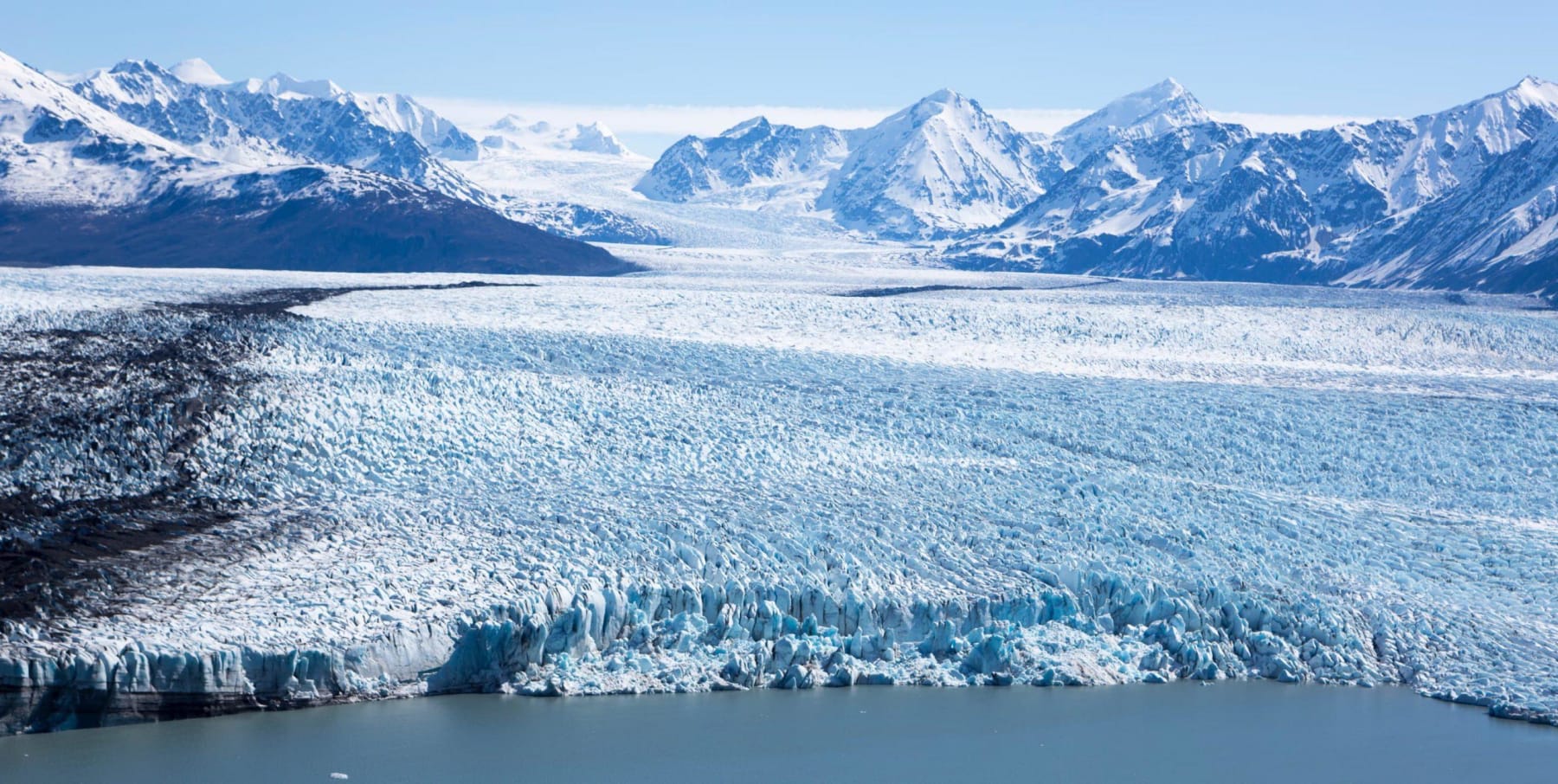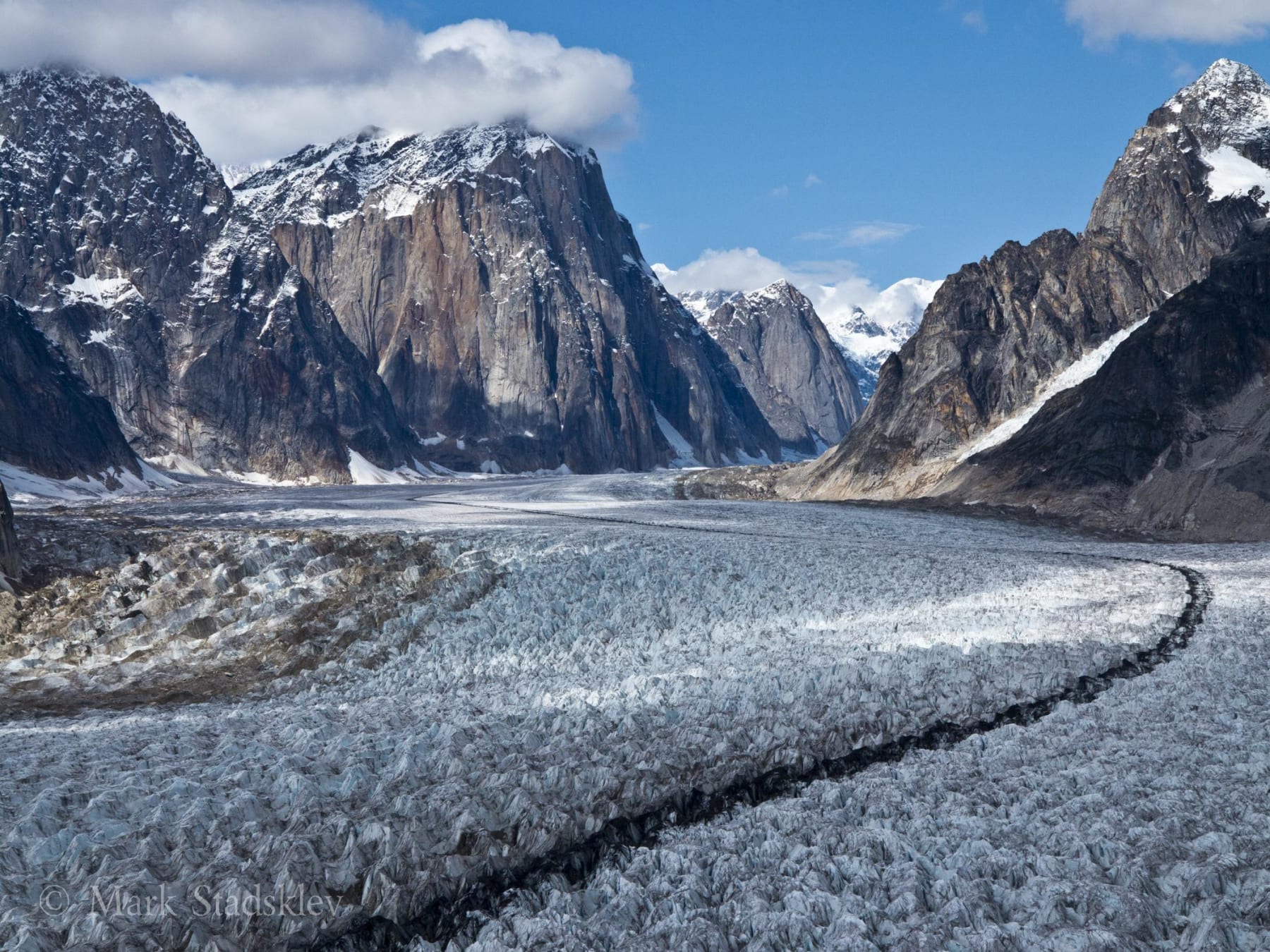Photo Safari
Please call (907) 243-1595 to book
-
A Note From Your Pilot:
Dear Photo Safari Adventurer,I’m looking forward to guiding your on our photo safari. Often time guests ask how to prepare and what lenses and filters to bring.Your choices are going to be led by what you like to shoot. I will endeavor to provide a variety from macro to pano. From the plane you usually don’t want wider than 35mm because you’ll get the airframe in the shot plus all the mountain vistas will look so tiny.I usually wear the 70-200 inflight.Also inflight I often set up high shutter speed and HDR multiple exposures. That way I can pick the one I want when I get back to the computer. Flying past a peak at 100 mph there often isn’t time to check exposure and with the high contrast from snow to black rock it can be tricky to expose each correctly. So shoot lots and delete.Whereas on the ground I favor the opposite approach. Spend time moving around and reframing composition to get what you want. A common mistake is for folks not to look outside of the viewfinder. When they get home they realize if they had just moved a bit they would have had a better shot.If we have the plane for the day and are landing at a variety of places be sure to have a tripod.If we’re able to get right up to some ice, or plants in the forest a dedicated macro lens and the practice of shooting focus stacking or HDR, come in handy. A polarizing lens helps the colors pop whether it’s blue ice ice or forest green. An 8x or other ND filter can slow down effectively waterfalls or creeks we might get near.And of course a nice wide angle lens. Do you know how to stitch together a pano and whether to shoot with your camera in vertical or horizontal mode?Do you know what the nodal point refers to? (Homework)😉The biggest mistake I see is people buying new gear for the big trip but not spending enough time learning how to use it.A good place to start is the ability to understand shooting in Manual mode. Every camera and model has it’s own menu so I usually am unable to help people find stuff in their menu options.Extra batteries of courseA lens clothIf shooting in a dark forest know where the shutter uplock and trigger delayed release are because of the longer exposure times.Having said all that, it’s important to remember to soak it in and not stress about the shots. Many folks have done this trip with nothing but a phone camera (or even gasp, no camera) and left with memories of a lifetime. It is my goal to make the flight as safe and as memorable as possible.If you have specific questions, please email us a info@flyrusts.com. Be sure to put Photo Safari Question in the subject line.And thanks for signing up for the adventure!Mark Stadsklev
Join Rust’s Flying Service on an unforgettable photo safari tour lead by photographer-pilot, Mark Stadsklev. Mark has been flying in Alaska for over 25 years. He is a published photographer whose work has appeared in magazines around the world including National Geographic, Stearns and Air and Space. Mark will guide you to some of the most beautiful remote locations Alaska has to offer. You will meet Mark at our office where he will do an overview of the day’s trip before boarding the floatplane and heading to your destination. The flight itself will provide amazing opportunities to photograph rugged peaks of our beautiful mountains, ice-blue glaciers, and unbelievable glacial pools. Mark will then put the floats down on a remote lake/waterway where you will depart the aircraft and begin photographing in a place where very few have visited before. Mark will be there to advise and guide. Lunch is included.
Possible destinations to include:
- Flight over Chugach State Park and mountain range, with views towards Prince William Sound, followed by landing on Lake George to explore the Colony Glacier, or Whiteout lake and glacier.
- Flight over the Chugach State Park and mountain range with views towards Prince William Sound, followed by landing on Spencer lake to explore Spencer glacier.
- Flight towards the Tordrillo Mountains within the Alaska Range, including Mount Spurr and the volcano’s dual cones, then over Capps and Triumvirate Glaciers with landing on Strandline Lake.
- Flight towards the Neacola Mountains within Alaskan and Aleutian Range, to overfly Blockade and Tanaina Glaciers with a landing at little summit lake, in Lake Clark Park and Wilderness Area.
- Flight into Denali National Park with aerial views of Denali (formerly Mount McKinley) and the Ruth Glacier, with landing on Backside lake











.png)
.png)






